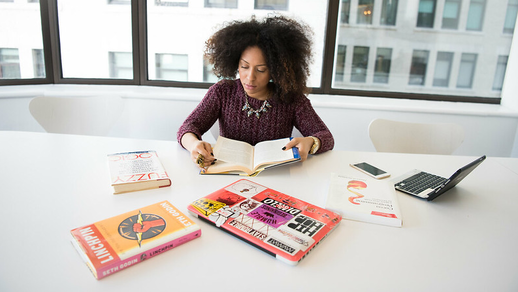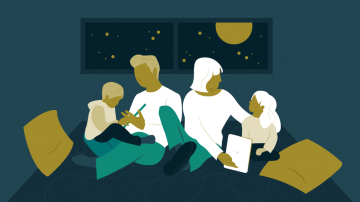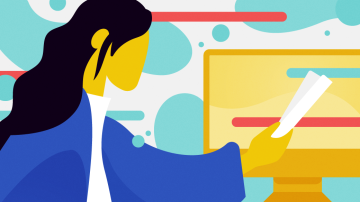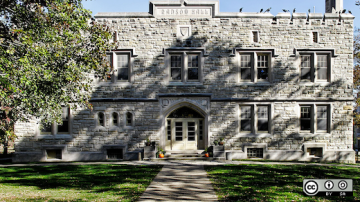Public education has always been a core value in my family. It was instilled in me from a young age that everybody deserves fair access to high-quality education. This virtue continues to influence me as I raise children of my own, one of whom will be entering kindergarten this fall. Open source is the perfect match for public education.
You may hear the term "open source" and immediately think it applies only to computer programmers and IT experts. I'm here to tell you that it is simply not true. Teachers and educators across all age groups, subject matters, and school settings are empowered to use open source in their classrooms. Before I get into what kind of open source tools are available for teachers, I first want to walk through the principles of open source and how they can be applied to education.
What are the principles of open source?
Incorporating the principles of open source in the classroom leads to more engagement and feelings of ownership from each student. There are five key principles of open source: transparency, collaboration, community, meritocracy, and release early and often. How does each of these principles carry over to school?
Transparency
On the first day of school, teachers set and communicate the rules of the classroom to their students. Parents also get a glimpse of how the classroom runs during meet-and-greet events at the beginning of the school year. These are examples of how transparency is used in education. Imagine how confusing and chaotic it could become for both teachers and students if expectations were not set and agreed upon on that first day.
Considering the classroom to be a safe space and encouraging students to be transparent about their feelings can be impactful as well. Parents, teachers, and students can feel and do their best if they are provided information upfront. Knowledge is power, and that is why transparency is so important.
Collaboration
Open collaboration means that education is not a one-way street. It is moving away from the "sage on the stage" model to embracing the opportunity that the teacher can learn as much as the student. Teachers and students experience co-learning when they collaborate on their educational journey.
Community
Cultivating a sense of belonging for students will make them feel more at ease away from home. A community can take shape in many forms. Traditionally, a school community is fostered by special events and activities that bring people together. Since the open source community is a global one, it has spent a lot of time and energy learning how to reach across language and geographic barriers. Educators can learn a lot from the open source community to build a new sense of community as more schools go virtual.
Meritocracy
Meritocracy encourages participation and appreciates great ideas no matter where they come from. In order for meritocracy to work in practice, it is critical to build an inclusive classroom environment. Celebrate the diversity of your classroom. Kids will feel empowered to share their ideas if they can use a medium they are comfortable with. Evaluate how to ask students for great ideas. Offer a variety of ways for students to share ideas, such as through art, writing, speaking, small groups, or physical activity.
Release early and often
"Release early and often" means taking an iterative approach to a project or program based on feedback. Feedback should not be reserved for report cards. Students should feel comfortable asking for feedback throughout the entire academic year. Asking for feedback is a sign of engagement and eagerness to learn.
Consider the concept of continuous assessment. The idea here is that tests are not a summative milestone at the end of the semester or year. Instead, they should be formative in nature to identify areas where students need additional attention.
[Read next: Lesson plans for an open education]
Break down skill training programs and customize them based on the results. Consider the example of how reading is a skill taught in kindergarten: Analyze how the student progresses in the classroom. Collect feedback from the parents or guardians so that you can make improvements to the program on the go. This strategy will reduce the risk that the student will become either too overwhelmed or bored. Instead, the student will be set up for success!
Open source technology for the classroom
The world of open source offers myriad resources and tools that are ideal for the K-12 classroom environment. If you are looking to expand your practice of open source beyond its principles and start using open source technology, check out these resources. No matter what your technical skill level, there are a variety of ways to get started that meet you at your comfort level.
- How to set up a remote school environment for kids with Linux
- How I use Hugo for my classroom's open source CMS
- Set up and run WordPress for your classroom
- Create web tutorials with Reveal.js and Git
- Learn Python programming the easy way with EduBlocks
- 6 open source teaching tools for virtual classrooms
- More articles about open source in education
Open Educational Resources (OER) also has a variety of resources that are freely available. Teachers can sign up for a free account and peruse the Common Core OER Hub. For example, EngageNY is a collection of free modules to help teach algebra, geometry, and other mathematical subjects through downloadable PDFs. It is provided by the New York State Education Department for anyone to use.
Stu Keroff is an educator, Linux advocate, and contributor to Opensource.com. We asked him what his advice would be for teachers looking to get more involved with open source technology. He wrote:
"My advice for a teacher wanting to try open source in education is to put a few computers running all open source in your classroom so that your students can see it and try it for themselves. Let them experience what is the same and what is different from what they are used to. Let them get involved in administering the machines. And don't be afraid to make mistakes. If you screw up one of your open source computers, just grab the flash drive and do it over again. Since open source operating systems like Linux run well on older computers, you don't need to get new machines, and you will probably even be able to get some for free if you look around."
Books and activities to inspire kids and parents with open source
There are many ways to inspire children to learn about open source outside of the classroom. Here are some ways I recommend for kids and parents to apply open source in their daily lives, whether it is through reading, playing outside, or trying new technology.
- 2020 Opensource.com summer reading list
- Everything you need to know about Grace Hopper in six books
- 7 maker toys for kids and teens
- Raspberry Pi DIY projects and resources
- 5 open source activities while you work from home
- Go on an adventure in your own town with StreetComplete quests
What motivates you to start using open source?
I'll close out this article with a piece of advice from one of our Opensource.com Correspondents, Cristiano Fontana. Here's his story:
"When I started with open source, I had two friends motivating me. They helped me [with] installing and getting started with Linux and its applications. At the time I did not really feel the need: I was happy with the software I was using. I was not even conscious of what open source meant. It took me a few years to transition to a fully open source setup. What I learned from this experience is that to get started with open source, you need good motivation and some support.
"Motivation is probably the most complex issue. What pushes you toward open source? It could be an ideological position. Maybe an economic reason, because you are obliged to use old hardware or do not want to spend too much on software. Is it due to your friends? For me, it became ideological when I deepened my awareness of what open source really is. At that point, I was ready for a full transition. If it is just curiosity, you can start slowly. The major open source applications are now cross-platform. Start from one of those, installing it in your current operating system. Then install the other ones in progression.
"On the other hand, support could be much easier to find. If there are no friends around you to help you, look for online or local communities of enthusiasts. There are installfests (installation parties) that can help you install Linux, for instance. Read some Opensource.com articles! They can be very valuable."
How will you start using open source in education? Let us know in the comments!















2 Comments